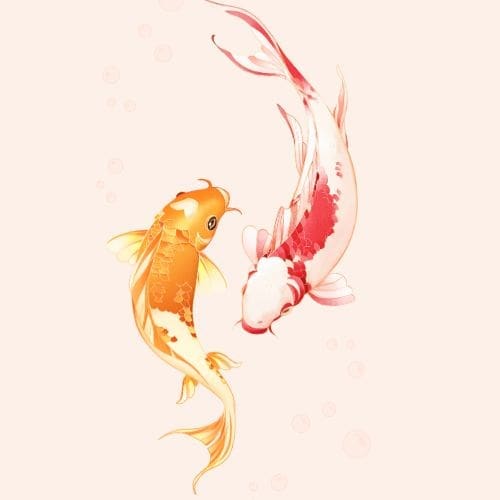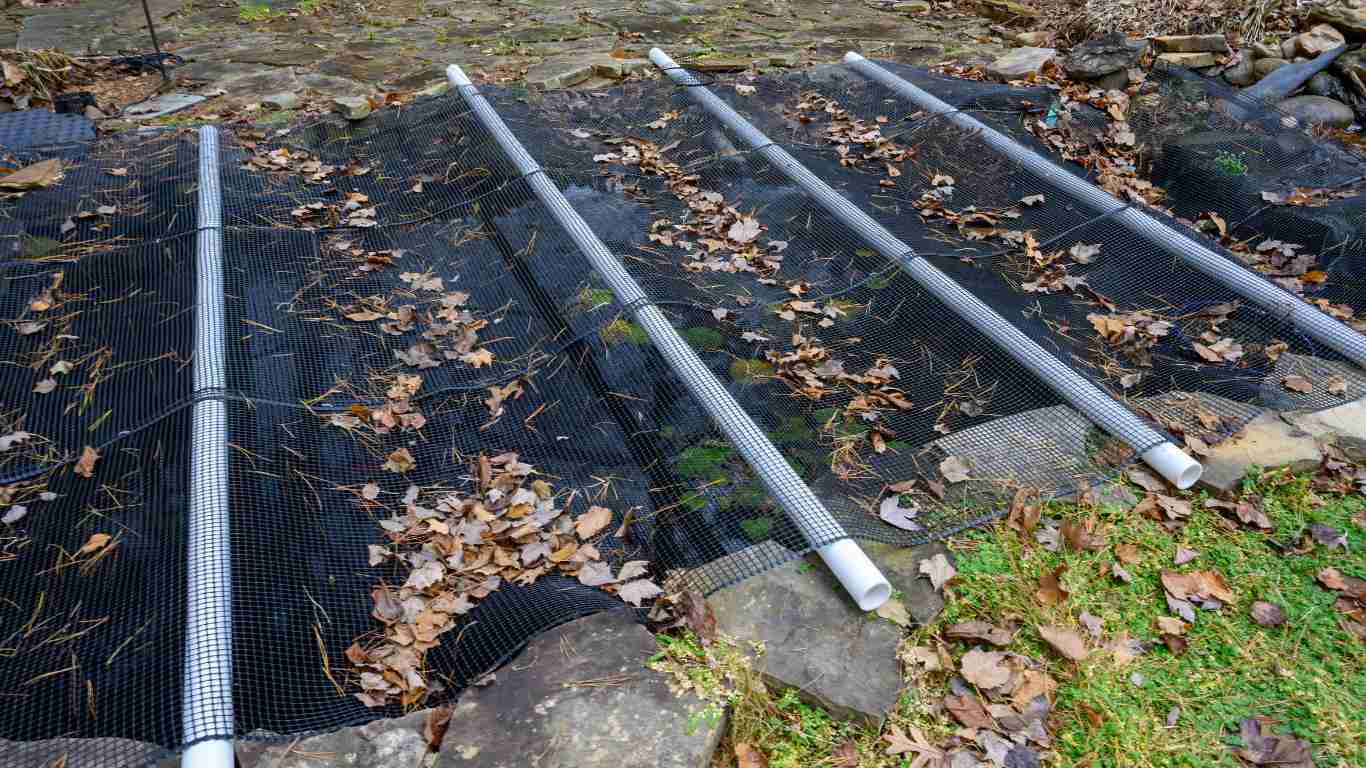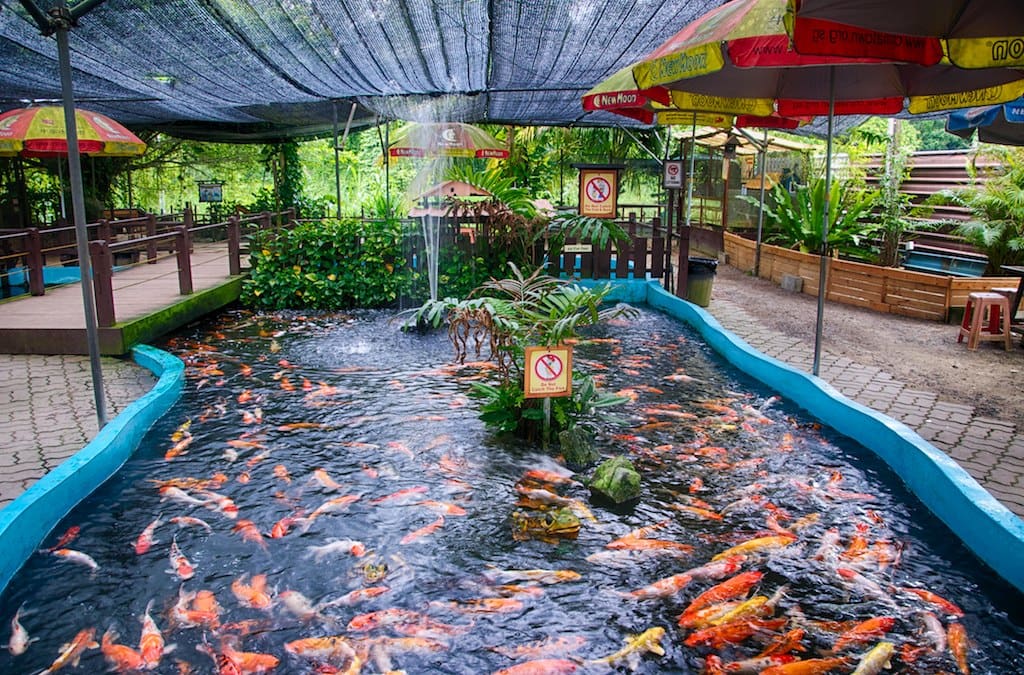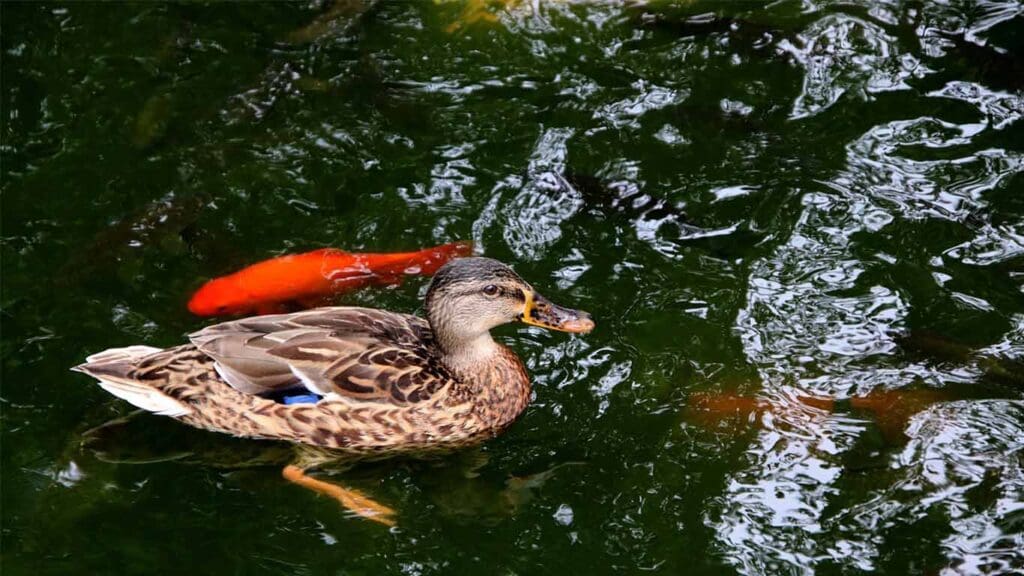Are you worried about predators targeting your beloved koi fish in your pond? Knowing how to protect your koi pond from predators is essential to ensure the safety and well-being of your fish. There are various ways to safeguard your pond from predators, and this article, titled ‘How to Protect Your Koi Pond from Predators’, will provide you with some helpful tips and tricks to keep your koi fish safe and sound.
One of the most effective ways to protect your koi pond from predators is to create a deep pond. Predators such as raccoons and herons find it difficult to catch fish in deep water, and it also provides an escape route for your koi fish. You should aim to keep your pond at least three to four feet deep, with steep sides to prevent predators from reaching the fish. Additionally, adding hiding places such as rocks and plants can provide your koi with extra protection.
Another way to protect your koi pond from predators, as detailed in ‘How to Protect Your Koi Pond from Predators’, is to install a protective barrier. Plastic netting can be placed over the pond to prevent predators from accessing the fish. You can also install a plastic heron on the pond to deter other herons from hunting in the area. By implementing these protective measures, you can help to ensure the safety and longevity of your koi fish.
How to Protect Your Koi Pond from Predators? Core Insights:
Protecting your koi pond from predators is an essential part of maintaining a healthy and happy environment for your fish. Here are some key takeaways to keep in mind:
By following these key takeaways, you can help protect your koi pond from predators and ensure that your fish remain healthy and happy for years to come.
Understanding Koi Pond Predators
Koi ponds are a beautiful addition to any backyard, but they can also attract unwanted visitors in the form of predators. Understanding the predators that may target your koi is the first step in protecting your beloved fish.


Identifying Common Predators
Some of the most common predators that may target your koi include:
- Herons
- Raccoons
- Cats
- Minks
- Otters
- Snakes
- Birds of prey
Each of these predators has its own unique characteristics and behaviors that make them a threat to your koi. For example, herons are known for their sharp eyesight and ability to quickly snatch fish out of the water, while raccoons are known for their dexterity and ability to bypass fencing and netting.
Understanding Predator Behavior
In order to effectively protect your koi, it’s important to understand the behavior of the predators that may target them. For example, many predators are most active during dawn and dusk, so it’s important to be especially vigilant during these times. Additionally, predators may be attracted to your pond by the scent of fish food, so it’s important to keep food stored securely and away from the pond.
Another important factor to consider is the layout of your pond. Predators may be more likely to target fish that are in shallow areas or near the edges of the pond, so it’s important to make sure that your pond is deep enough and has adequate hiding places for your koi.
By understanding the common predators that may target your koi and their behavior, you can take steps to protect your fish and enjoy your beautiful koi pond for years to come.


Get the Information You Need!
Join Us and Ask an Expert
Creating a Safe Environment
When it comes to protecting your koi pond from predators, the best defense is a good offense. By taking proactive steps to create a safe environment, you can reduce the risk of predators harming your koi fish. Here are two key strategies for creating a safe environment for your koi pond:
Designing a Predator-Proof Pond
Designing a predator-proof pond is an important first step in protecting your koi fish. Here are some tips to consider when designing your pond:
- Depth: Make sure your pond is at least three to four feet deep. This will make it harder for predators to reach your fish.
- Sides: The sides of your pond should be steep and difficult for predators to climb. This will help prevent land predators from reaching your fish.
- Hiding Places: Provide plenty of hiding places for your koi fish. This can include rocks, plants, and other features that provide cover.
- Water Flow: Make sure your pond has good water flow. This will help keep the water fresh and prevent predators from lurking in still water.
Using Pond Netting


Another effective way to protect your koi fish is to use pond netting. Here are some tips to consider when using pond netting:
- Material: Use high-quality, durable netting that is designed to withstand the elements.
- Size: Make sure your netting is large enough to cover your entire pond.
- Installation: Proper installation is key to ensuring your netting is effective. Make sure it is securely anchored and does not sag or droop.
- Maintenance: Regularly inspect your netting for damage or wear and tear. Replace it as needed to ensure your koi fish remain protected.
By following these strategies, you can create a safe environment for your koi fish and reduce the risk of predators harming them.
Implementing Protective Measures
Protecting your koi pond from predators is essential to ensure the safety of your fish. Here are two effective protective measures that you can implement:
Installing Motion-Detected Sprinklers
One of the most effective ways to deter predators is by installing motion-detected sprinklers. These sprinklers are designed to activate when they detect motion, which will scare away predators and prevent them from getting too close to your pond.


Motion-Detected Sprinklers to Protect Koi Pond
When installing motion-detected sprinklers, make sure to position them strategically around your pond. Place them in areas where predators are most likely to approach, such as near the edge of the pond or in areas where there is a lot of vegetation.
Using Decoy Predators
Another effective way to protect your koi pond is by using decoy predators. Decoy predators can be anything from plastic herons to fake snakes. These decoys will trick predators into thinking that there is already a predator in the area, which will deter them from approaching your pond.
When using decoy predators, make sure to move them around periodically to prevent predators from becoming accustomed to them. Additionally, make sure to clean them regularly to prevent them from becoming dirty or damaged.
By implementing these protective measures, you can ensure the safety of your koi fish and prevent predators from causing harm.
Monitoring Your Koi Pond
To ensure the safety of your koi fish, it is important to monitor your pond regularly. This includes regular check-ups and installing surveillance cameras.


Regular Check-Ups
Regular check-ups are essential to ensure that your koi fish are safe and healthy. Check the pond for any signs of damage or weakness that may make it easier for predators to access. Inspect the fencing and netting around the pond to ensure that it is secure and in good condition. Check the water quality and temperature to ensure that it is optimal for your koi fish.
During your check-up, also keep an eye out for any signs of predators, such as footprints or droppings. If you notice any signs of a predator, take immediate action to protect your koi fish.
Installing Surveillance Cameras
Installing surveillance cameras around your koi pond can help you keep an eye on your fish and identify any potential predators. Place the cameras in strategic locations around the pond, such as near the entrance or in areas where predators are likely to approach.
When choosing a surveillance camera, look for one that is weather-resistant and has night vision capabilities. This will ensure that the camera can function in all weather conditions and at any time of day.
Regularly review the footage from your surveillance cameras to identify any potential threats to your koi fish. If you notice any predators, take immediate action to protect your fish.
By monitoring your koi pond regularly and installing surveillance cameras, you can help ensure the safety and well-being of your koi fish.


JOIN OUR COMMUNITY AND GET A FREE E-BOOK
Responding to Predator Attacks
Identifying Signs of an Attack
It is important to be vigilant for signs of predator attacks on your koi pond. Signs of an attack include missing fish, damaged fins, and scratches on the bodies of the remaining fish. You may also notice that the water in your pond is cloudy or discolored, which can indicate that a predator has disturbed the pond’s ecosystem.
Taking Immediate Action
If you suspect that a predator has attacked your koi pond, it is important to take immediate action. The longer you wait, the more damage the predator can do. Here are some steps you can take to respond to a predator attack:
- Remove any dead or injured fish from the pond and place them in a separate container of water.
- Check the perimeter of your pond for signs of damage, such as holes or gaps in the netting. Repair any damage as soon as possible to prevent further attacks.
- Install additional protective measures, such as plastic netting or decoys, to deter predators from returning.
- Consider adding motion-activated lights or sprinklers to scare off predators.
- Monitor your pond closely for several days after an attack to ensure that no more fish are lost.
Remember, prevention is the best defense against predator attacks. Keep your pond well-maintained and protected to reduce the risk of an attack in the first place.
Frequently Asked Questions
Do floating pond protectors effectively keep predators away from koi ponds?
Floating pond protectors can be an effective way to keep predators away from your koi pond. These devices typically consist of a net that covers the surface of the pond, preventing birds and other predators from accessing the fish. However, it’s important to note that some predators may still be able to get through the netting or find other ways to access the pond. Additionally, floating pond protectors can be unsightly and may not be the best option for all pond owners.
When do herons typically attack ponds and how can I prevent it?
Herons are most active during the early morning and late afternoon, so these are the times when they are most likely to attack your pond. To prevent heron attacks, you can try using a scarecrow or other visual deterrents. You can also try planting tall grasses or other vegetation around the pond to make it less appealing to herons.
What are the best ways to keep hawks and owls away from my koi pond?
Hawks and owls are primarily attracted to ponds that have open areas around them, as this gives them a clear line of sight to the fish. To prevent these predators from attacking your pond, you can try planting tall grasses or other vegetation around the pond to create a barrier. You can also try using visual deterrents, such as shiny objects or scarecrows.
How can I prevent mink from eating fish in my pond?
Mink are excellent swimmers and can easily access ponds from the water. To prevent mink attacks, you can try using a fence or other physical barrier to keep them out of the pond. You can also try using a live trap to catch and relocate any mink that are causing problems.
What are the most effective methods for keeping birds from eating my pond fish?
In addition to using floating pond protectors, you can also try using decoys or other visual deterrents to keep birds away from your pond. You can also try planting tall grasses or other vegetation around the pond to create a barrier. Additionally, you can try using bird netting or other physical barriers to prevent birds from accessing the pond.
What are the most common predators of koi fish and how can I protect my pond from them?
The most common predators of koi fish include herons, raccoons, cats, snakes, hawks, and owls. To protect your pond from these predators, you can try using a combination of physical barriers, such as fences and netting, and natural deterrents, such as plants and predators. Additionally, you can try using visual deterrents, such as scarecrows or decoys, to keep predators away from the pond.
 1 (509) 228-8646
1 (509) 228-8646



